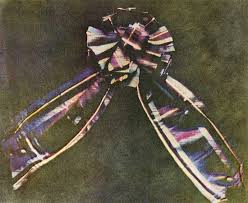The First Color Photo: A Landmark in Photography History
Photography has come a long way since its inception, with advancements in technology continually pushing the boundaries of what is possible. One such milestone in the history of photography is the creation of the first color photograph, a breakthrough that revolutionised the way we capture and perceive the world around us.
The first color photograph was taken by James Clerk Maxwell in 1861 using a process known as trichromy. This innovative technique involved taking three separate black-and-white photographs of the same scene through red, green, and blue filters. These images were then projected onto a screen using three different projectors equipped with matching filters to recreate the original scene in full color.
Maxwell’s groundbreaking experiment not only demonstrated the principles of color photography but also laid the foundation for future advancements in the field. His work paved the way for the development of modern colour photography techniques that have become ubiquitous in our lives today.
Since Maxwell’s pioneering efforts, color photography has evolved significantly, with digital technology now allowing us to capture vibrant and lifelike images with ease. The ability to reproduce colors accurately has transformed how we document our world, from capturing everyday moments to creating stunning works of art.
The first color photograph remains a testament to human ingenuity and our relentless pursuit of innovation. It serves as a reminder of how far we have come in our quest to capture and celebrate the beauty of our surroundings in all its colorful glory.
As we continue to push the boundaries of what is possible in photography, let us remember the historic significance of that first color photo and celebrate the endless possibilities that lie ahead in this ever-evolving art form.
Exploring the Evolution of Colour Photography: From Its Origins to Widespread Use
- Was there color photography in the 1940s?
- Did they have color photos in 1899?
- What was the first picture with color?
- Why did photographers not use color before 1970?
Was there color photography in the 1940s?
In the 1940s, color photography had already made significant advancements since the pioneering work of James Clerk Maxwell in the 19th century. While color photography was not as widespread or accessible as black-and-white photography during this period, there were notable developments that laid the groundwork for the vibrant and lifelike images we are familiar with today. Various techniques and processes for capturing color photographs were being explored and refined in the 1940s, marking a crucial era of transition towards the widespread adoption of color photography in the years to come.
Did they have color photos in 1899?
In 1899, the concept of color photography was still in its early stages of development. While black-and-white photography had become increasingly popular and accessible by that time, true color photography as we know it today was not yet widely practised. The first practical methods for capturing color images, such as trichromy, were being experimented with in the mid-19th century but had not yet reached mainstream use. It would take several more decades of research and technological advancements before color photography became a common practice in the early 20th century.
What was the first picture with color?
The question “What was the first picture with color?” often sparks curiosity about the origins of color photography and the landmark moment when the first color photograph was created. The answer to this query leads us back to 1861, when James Clerk Maxwell produced the first color photograph using a pioneering technique known as trichromy. By capturing three separate black-and-white images of a scene through red, green, and blue filters, Maxwell demonstrated the principles of color photography and set the stage for future innovations in capturing the world in all its vibrant hues. This historic achievement marked a significant milestone in the history of photography, showcasing humanity’s enduring quest to capture and portray the beauty of our surroundings in full colour.
Why did photographers not use color before 1970?
Photographers did not widely use color photography before 1970 primarily due to technological limitations and the complexity of the process involved. Prior to the 1970s, color photography was a more intricate and expensive endeavour compared to black-and-white photography. The early methods of capturing color images required specialised equipment, such as multiple exposures and complex chemical processes, making it less accessible for everyday use. Additionally, the quality and stability of color photographs were not as reliable as black-and-white images, further limiting their widespread adoption. It was not until advancements in technology and the development of more user-friendly colour film that photographers began to embrace color photography on a larger scale after 1970.

